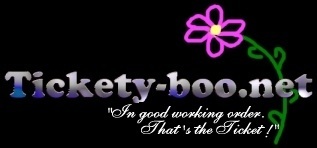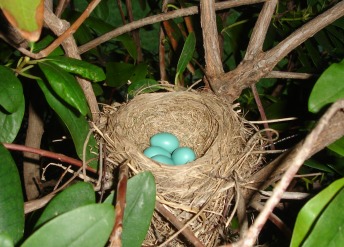
Make Springtime for the birds
Turn your yard into a Wildlife Sanctuary!
Spring is the perfect time to enjoy the awakenings of the season.You can start by easily attracting a variety of beautiful birds to your yard. Each year, millions of first time bird-watchers discover the joys of this pastime. The reason - simple: birds are so much fun to watch and listen to! Another great thing about bird watching is that you can enjoy it just about anywhere. And, a great place to start is right in your own backyard. Here are a few hints to turn your backyard into a haven for birds and other wildlife. Yes- that may also mean squirrels, chipmunks and deer !

For starters, go green and stop using those dangerous pesticides on your lawn. Everyday there is more bad news as to how harmful pesticides are to our eco-system and us. I'm a firm believer that pesticides are the reason for our declining honeybees around the world, but that is another story.
When you create an atmosphere that makes them feel at home, soon you will find birds staying around to rear their young. This consists of supplying them with their basic requirements for survival which are: food, water, a place to build a nest, native shrubs, trees, vegetation, plenty of wildflowers, and native perennials. Seed-producing flowers that will attract birds include: aster, bachelor button, blessed thistle, blanket flower, cone flower, cosmos, calendula, coreopsis, sunflowers, black-eyed Susans, California poppies, goldenrod, marigolds, phlox, salvias, and zinnias.
Food -Provide bird feeders on extra tall shepherd hooks to hang bird seed and prevent the deer from reaching the food. Also the higher the bird feeders are from the ground the safer the birds feel. Provide several bird feeders with mixed seed and black oil sunflower seeds and keep them full. The squirrels, chipmunks and deer can always get their scrap seed from the ground. Retail stores that sell bird feeders also sell them that are squirrel proof. Some birds like the dark- eyed juncos and mourning doves like to eat their seed from the ground as well. Nothing goes to waste.
Birds must have water. If there is not a nearby source of water like a pond or creek, you can create birdbaths with fresh water. It's nice if you can place the feeder and bird baths so you can watch birds from a comfortable location, but also keep in mind their needs. Make sure you place the feeder in an open area so they can look out for predators, but near shrubs or evergreen trees so they can make a quick get-away. Woody plants with thorns, such as roses or hawthorn, are helpful to birds because they provide refuge from predators such as house cats and hawks.
American gold finches need special feeders that hold small thistle seed or a special mix of small seed just for finches. Thistle seed is a little more expensive, but is well worth it if you are consistent and keep the feeders full and the seed fresh. I admit it can be a challenge to keep thistle seed fresh because it will go stale and mildew once it gets wet. It's important to keep the thistle seed dry. I gave up on feeding the American gold finch but my mother feeds the gold finches fresh thistle seed all year long. She also has a water heater to keep the bird baths defrosted during the winter. She is delighted with her birds, especially her gold finches, and they have been coming to her yard for years. It is not uncommon to see thirty yellow finches in her yard at one time ! I'm happy to attract cardinals, black capped chickadees, juncos, assorted sparrows, house wrens, white breasted nuthatches, and whatever else finds its way to my yard.
Once you start to provide food for birds, continue throughout the cold season.
As winter approaches and the natural food supply for birds dwindles, birds become more dependent on bird feeders for seeds and suet. Your feeder may be what enables them to live through winter. Also, for birds that do not migrate, winter storms can bury their food supply. When you add to that the natural condition of reduced time for foraging due to shorter days, winter is a real hardship for birds.
There are other ways to provide food: growing plants around your yard that offer fruits, seeds, and a habitat that birds love. Plants to add to your landscape include: American Elderberry, American holly, red buckeye, flowering dogwood, pagoda dogwood, nannyberry, fir, hawthorn, sweet gum, flowering crab apple, pine, coralberry and fruit-bearing viburnums. Birds are also attracted to trees because of the insects that live in their bark. Most often it is the hairy woodpecker in the trees taking advantage of the insects found under the bark. To attract insect-eating birds such as woodpeckers, chickadees and nuthatches, offer suet in the wintertime. Ground feeding birds like juncos, sparrows, towhees and mourning doves prefer cracked corn scattered on the ground or placed in an elevated tray.
While water is the least important of the three requirements, it can make a difference to the number of birds visiting your feeders. If birds must fly long distances to find water in the winter, they may choose to stay near their water source rather than coming back to your feeder. The easiest way to provide water year round is to have a heated bird bath. Bird bath heaters are completely safe if used as directed.
Keep your feeders clean to prevent diseases and deter pests. Disinfect bird baths occasionally with one part chlorine bleach and nine parts lukewarm water and rinse thoroughly before using.
Each year, millions of first time bird-watchers discover the joys of this pastime. My sister keeps a journal to record the visitors at her feeders and even enjoys the antics of the squirrels that cannot solve the puzzle of the squirrel proof feeders, and must rely on what lands on the ground.Squirrels are crafty little opportunist and sometimes you have to be particularly creative in keeping them off the bird feeders.